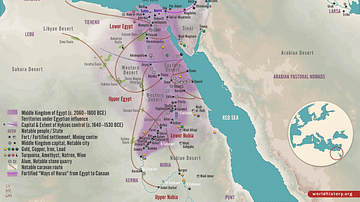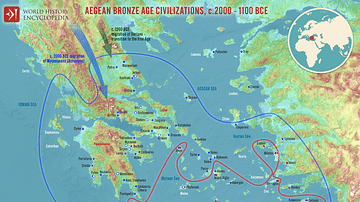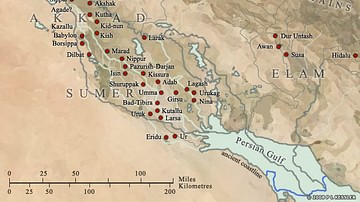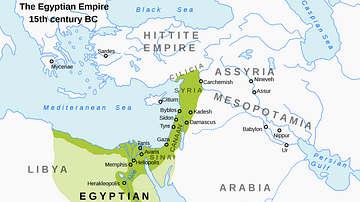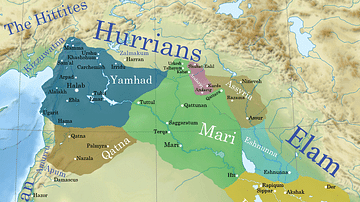Illustration
A general map of Mesopotamia and its neighbouring territories which roughly covers the period from 2000-1600 BCE reveals the concentration of city states in Sumer, in the south.
This is where the first true city-states arose, although the cities of northern Mesopotamia and Syria were roughly contemporaneous. However, the latter remained relatively minor states with a less intensive level of development until the collapse of Sumerian civilization. In the ensuing power vacuum, cities such as Ashur (one of the three main Assyrian cities), and Ebla and Babylon (both Amorite cities) quickly grew in wealth and strength.
Shubat-Enlil, in the Khabur river valley in northern Mesopotamia, was the rapidly developed capital of Shamshi-Adad's kingdom of Upper Mesopotamia in the 19th century BCE. Before that it had been a Halaf Culture town and the capital of a minor state called Apum.
References
- Anonymous. Bartholomew's World Atlas.
- Christopher Scarre. Past Worlds. Times Books, 1995.
- Croft, John D. Map of Sumer.
Cite This Work
APA Style
Kessler, P. L. (2012, April 26). Map of Mesopotamia, 2000-1600 BCE. World History Encyclopedia. Retrieved from https://www.worldhistory.org/image/588/map-of-mesopotamia-2000-1600-bce/
Chicago Style
Kessler, P L. "Map of Mesopotamia, 2000-1600 BCE." World History Encyclopedia. Last modified April 26, 2012. https://www.worldhistory.org/image/588/map-of-mesopotamia-2000-1600-bce/.
MLA Style
Kessler, P L. "Map of Mesopotamia, 2000-1600 BCE." World History Encyclopedia. World History Encyclopedia, 26 Apr 2012. Web. 08 Apr 2025.

